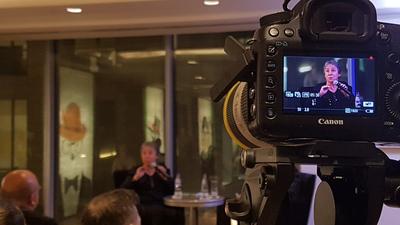Marten van Wijhe
Anaesthesia advisor to MSF Amsterdam
Yusuf was looking at me with big eyes and sweat drops on his ten year old forehead from the cot in the corner of the male surgical ward. It was 7am the day after a major operation and I wanted to check his condition before the hectic next day’s work got underway. He was in with the adults as the pediatric ward was understaffed and could not care for postoperative patients properly.
He looked frightened; probably of me, being a white clad foreigner who had given him an intravenous catheter the day before just prior to putting a black mask over his face, unable to explain the benefits of supplementary oxygen to him. His fluid balance was all right now, so I asked the male nurse on the ward to come over and tell me if there was anything particular with Yusuf that I ought to know. There wasn’t. How about pain I asked, from the look of him he seems to be in pain. Then followed a crossed arm correction: “Doctor! These people do not feel pain!”
Visiting the maternity ward of a large district hospital I heard loud screams coming from the ward. “Should we go help?” I asked the nurse who was showing me around. “Oh no,” she said “those are just the women in labour”. “Don’t they get analgesics?” I asked. “Oh no, we’re much too busy for that.”
Managing pain
As advisor in anaesthesia for the MSF Amsterdam office I have had the opportunity to visit most of the projects we have that offer surgical services. One of the things that strikes me everywhere I come is the very poor standard of pain management. Contemporary medical evidence shows that healing improves and the incidence of complications, such as infections and thrombosis, decreases with adequate pain management.
The World Health Organization has for years promoted pain management by their simple “ladder” model, which boils down to starting simply and adding moderate strength analgesics when needed, and again exchanging those for strong (opioid) analgesics if the patient so requires.
So what are the reasons for the systematic undertreatment everywhere? Sometimes there are cultural issues: “we strong men don’t feel pain” (perhaps, but the body still responds to the physiologic stress response). Sometimes doctors and nurses have the opinion that whatever the patient complains of can’t be all that bad (until they have an accident or an operation themselves) or irrationally fear side effects. And unfortunately the drugs we need to treat pain properly are often just not available (due to restrictive bureaucracy in and outside the health facility).
The first and second reason we can deal with through education, however the misconceptions about the dangers of opioids have led to an infectious condition in the medical community I term “opiophobia”.
Misconceptions
All the medical objections to opioid use for acute pain can be rationally dismissed; people in pain do not become addicted, there is a difference between tolerance, physical dependence and addiction, and opioid use does not lead to respiratory depression if the patient is properly monitored. Pain and respiration are each other’s natural antagonists.
The only real problem that can only be dealt with administratively, but then not even wholly is misappropriation of opioids for criminal purposes. That is however not a valid reason to withhold treatment that relieves serious suffering and prevents medical complications.
What we need is a worldwide (postgraduate) education program to teach proper attitudes about and the prescribing of analgesics in general and strong opioids in particular. Morphine is one of the oldest known drugs to mankind and it’s time we cleared the misconceptions about its use…




